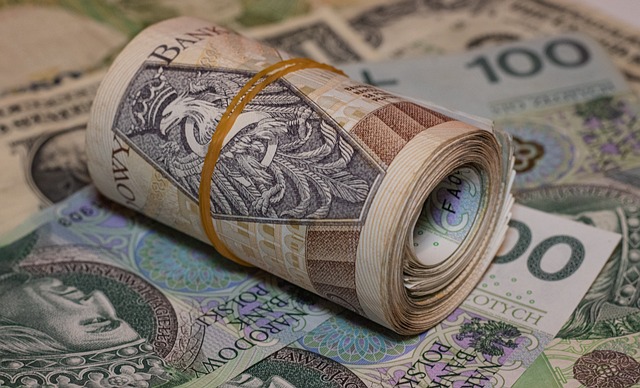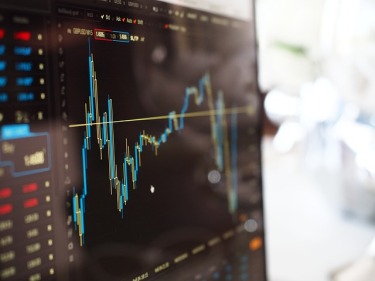The Profit Factor is a crucial metric for evaluating the profitability of a trading strategy. This blog provides a detailed explanation of the Profit Factor, from its overview and ideal values to the risks associated with an excessively high Profit Factor and the problem of over-optimization. This article is packed with useful information for traders, so please take a moment to read it.
1. What is the Profit Factor?

The **Profit Factor** is a key metric used to assess the profitability of a trading method or system.
The Profit Factor is calculated by dividing the total gross profit by the total gross loss over a specific period. Specifically, the sum of all profits within the period is considered the gross profit, and the sum of all losses is considered the gross loss.
This metric is highly useful for understanding the efficiency of a trading method or system. A Profit Factor greater than 1 indicates that the trading strategy is generally profitable, while a value less than 1 suggests that losses exceed profits.
The specific formula is as follows:
Profit Factor = Gross Profit / Gross Loss
For example, if the gross profit was $2,000,000 and the gross loss was $1,000,000 over a certain period, the Profit Factor would be 2.0. A Profit Factor of 1.0 or higher suggests that the trading method has the potential to generate profit.
The Profit Factor is also frequently used to evaluate the performance of automated trading systems (Expert Advisors or EAs) and during backtesting. It’s an especially effective metric when assessing EAs. In historical testing, it’s crucial to use the Profit Factor to objectively evaluate the effectiveness of trading methods and systems.
The Profit Factor is a very important metric for investment management and for growth as an investor. Accurately setting the Profit Factor and evaluating the effectiveness of trading strategies and methods are indispensable. This allows you to continue trading soundly, not only in terms of profitability but also mentally.
2. Ideal Profit Factor Values

The ideal value for the Profit Factor is generally said to be “1.2 to 1.3,” but this value doesn’t apply in all cases.
When considering the ideal Profit Factor, you should pay attention to the following points:
1. A value of 1.0 or higher indicates profitability
A Profit Factor of 1.0 or higher indicates that the trading strategy is generating profit. In other words, the total gross profit exceeds the total gross loss. Conversely, if the Profit Factor is less than 1.0, it is highly likely that losses are being incurred.
2. A Profit Factor of 1.2 or higher
A Profit Factor of 1.2 or higher signifies a safer trading strategy. Such strategies are considered more robust against future fluctuations and unpredictable events. On the other hand, if the Profit Factor is less than 1.2, there may be insufficient margin for generating profit.
A high Profit Factor is not always ideal. This is because you need to consider the balance between risk and reward. Even with a high Profit Factor, you must assess whether you can take on the corresponding risk.
The ideal target Profit Factor varies depending on your trading style, strategy, and risk tolerance. It’s crucial to evaluate it not just as a single metric but in combination with overall trading performance and risk management.
Determining what Profit Factor your trading strategy should aim for and finding that balance is key to success.
3. The Dangers of an Excessively High Profit Factor

While Expert Advisors (EAs) with excessively high Profit Factors may seem attractive, caution is advised. Below, we’ll explain the potential risks associated with EAs that boast high Profit Factors.
3.1 Over-optimization (Overfitting)
Over-optimization refers to a state where an EA is excessively adapted to historical data, leading to a high Profit Factor. However, an over-optimized EA may not perform well in new market conditions, and its performance can become unstable in actual trading environments.
3.2 Low Number of Trades
EAs with high Profit Factors may have a low number of trades in their backtests. If the number of trades is small, the EA’s performance may not be statistically significant and could be due to chance.
3.3 High-Risk Trading Strategies
To achieve a high Profit Factor, an EA might employ high-risk trading strategies. While this may temporarily yield high profits, it could lead to significant losses when market conditions become unfavorable.
3.4 Discrepancy with Actual Trading Conditions
In actual trading environments, factors exist that influence EA performance. EAs showing high Profit Factors might be optimized without considering these realistic trading conditions. Therefore, they may not perform as expected in live trading.
Considering these factors, EAs with extremely high Profit Factors require careful consideration. Before trusting them, it’s essential to test them or make a prudent judgment before transitioning to live operation.
4. The Problem of Over-optimization

Over-optimization is a problem where excessive optimization with fine-tuned conditions leads to settings that are only effective during that specific backtesting period.
An over-optimized EA may only perform effectively in specific past market conditions, carrying the risk of significantly reduced performance in new market environments.
Over-optimization based on historical data does not yield the same results for future markets, leading to unstable performance in actual trading environments.
The problem of over-optimization has the following characteristics:
Adaptation to Specific Market Environments Only: An over-optimized EA shows high performance only in specific market conditions. However, in new or volatile market conditions, its performance can significantly decline.
Adaptation to Historical Data: Over-optimized EAs are excessively tuned to historical data and have low adaptability to future data. This is because excessive optimization does not yield the same results for new or volatile market conditions.
Increased Risk: While over-optimization may temporarily show a high Profit Factor, it carries the risk of causing significant losses in actual trading environments. It may also employ high-risk trading strategies.
To avoid the problem of over-optimization, it’s necessary to **use versatile optimization methods and develop EAs that can win in actual trading environments**. Additionally, using a technique called **forward optimization** is important. Forward optimization is a method that divides backtesting data for optimization and evaluation, avoiding settings that depend on specific past conditions.
By understanding the problem of over-optimization and using appropriate optimization methods, you can build a more robust trading system.
5. Causes of Profit Factors Exceeding Ideal Values

While EAs with high Profit Factors exist, the causes vary. Below, we explain the reasons for Profit Factors exceeding ideal values.
Over-optimization
Over-optimization refers to a state where an EA is excessively adapted to historical data, leading to a high Profit Factor. However, an over-optimized EA may not perform well in new market environments, and its performance can become unstable in actual trading. A high Profit Factor resulting from over-optimization may not translate into profitability in live trading.
Low Number of Trades
EAs with high Profit Factors may have a low number of trades in their backtests. If the number of trades is small, the EA’s performance may not be statistically significant and could be due to chance. More trade data is needed, and if the number of trades in actual market conditions is low, a high Profit Factor may lack reliability.
High-Risk Trading Strategies
To achieve a high Profit Factor, an EA might employ high-risk trading strategies. Such trading strategies may temporarily yield high profits but could lead to significant losses when market conditions become unfavorable. Since risk management is also a crucial factor, careful evaluation is necessary.
Discrepancy with Actual Trading Conditions
In actual trading environments, factors exist that influence EA performance. EAs showing high Profit Factors might be optimized without considering these realistic trading conditions. Therefore, they may not perform as expected in live trading.
Considering these factors, EAs with extremely high Profit Factors require careful consideration. Before trusting them, it’s essential to test them or make a prudent judgment before transitioning to live operation.
Summary
The Profit Factor is a critical metric for judging the effectiveness of a trading method. The ideal range of 1.2-1.3 indicates a balance between safety and profitability, but the optimal value varies depending on the individual trading strategy. However, it’s crucial to be aware of issues like over-optimization and high risk. When evaluating the performance of a trading system, it’s important to make careful judgments not only based on the Profit Factor but also from the perspective of real market verification and risk management. Maintaining an appropriate Profit Factor while balancing profitability and stability is essential for building a successful trading method.
Frequently Asked Questions
What is the Profit Factor?
The Profit Factor is an important metric for evaluating the profitability of a trading method or system. It is calculated as the ratio of gross profit to gross loss, and a value greater than 1 indicates that trades are generally profitable. A value less than 1 means that losses exceed profits. This metric is very useful for understanding the efficiency of a trading method or system.
What are the ideal values for the Profit Factor?
The ideal value for the Profit Factor is generally considered to be 1.2 to 1.3. A value of 1.0 or higher indicates profitability, and a value of 1.2 or higher is considered a safer trading strategy. However, it’s necessary to consider the balance between risk and reward, and it’s important to set an appropriate target value according to your own trading strategy.
What are the risks of an excessively high Profit Factor?
EAs with excessively high Profit Factors can have potential issues such as over-optimization, a low number of trades, high-risk trading strategies, and a discrepancy with actual trading environments. Understanding these risks and carefully considering them is important. It’s necessary to consider risk management, not just a high Profit Factor.
What causes a Profit Factor to exceed ideal values?
Causes for a Profit Factor exceeding ideal values include over-optimization, a low number of trades, high-risk trading strategies, and a discrepancy with actual trading environments. Due to these factors, a high Profit Factor may be displayed temporarily, but it may not achieve sufficient profitability in actual trading. Careful consideration and evaluation are necessary.
The profit factor is one of the most important indicators when selecting an FX automated trading system (EA). The profit[…]
References
✅よくある誤解は「プロフィットファクターは高ければ高いほど良い」というものです。プロフィットファクターが2以上のEAは遅…
プロフィットファクターとは、総利益を総損失で割って求められる数値のことです。総利益が総損失に対して何倍かの比率を表し、1…












